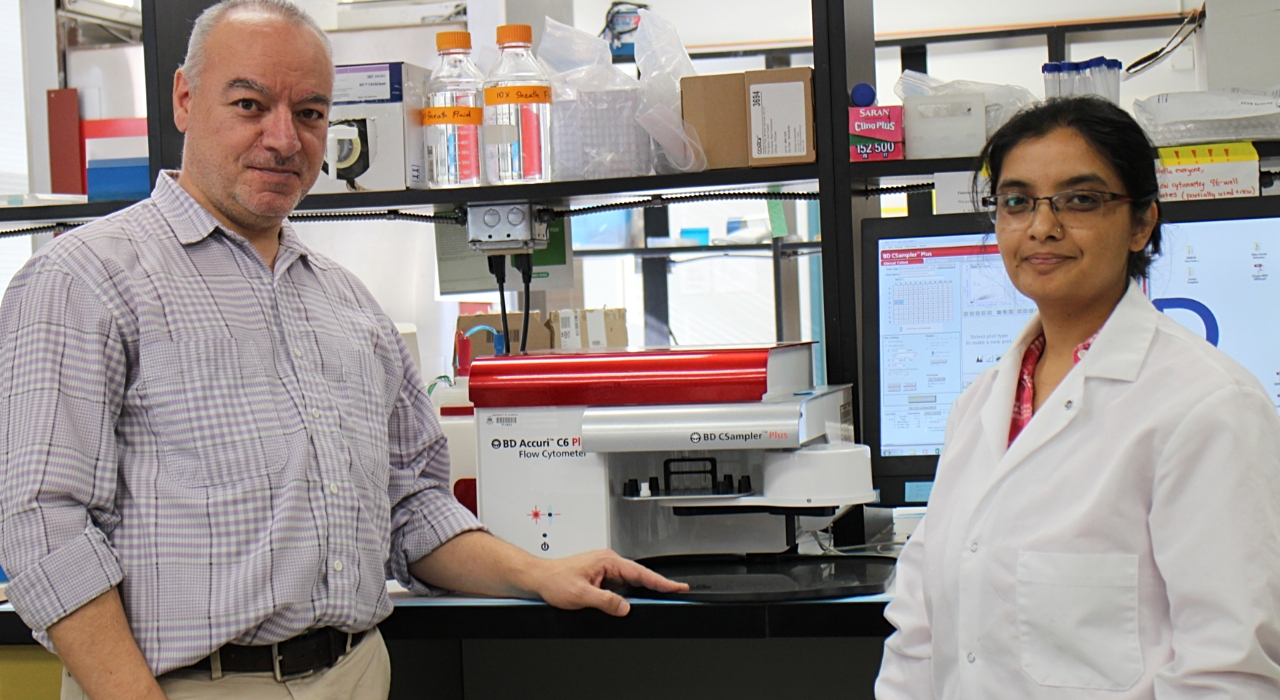A cancer researcher at the University of Alberta and his team are breathing new life into a promising cancer therapy by improving how the treatment is delivered.
Hasan Uludag, a professor in chemical and materials engineering, and his team have developed a chemical compound that allows them to effectively inject genetic material into cells.
The compound, a lipopolymer, prompts the cells to begin producing a protein-tumour necrosis factor-related apoptosis-inducing ligand (TRAIL)-that has been proven to kill tumour cells effectively.
The TRAIL protein has been used in treatment but led to many side-effects. The addition of the compound, which uses the positive cancer-killing aspect of the TRAIL protein, eliminates the side-effects.
"When you have this combination (of the protein and the compound), the cells are ready, they are primed for the action of this protein, so when they see TRAIL they display this high potency and they die much more easily," said Uludag.
With the new delivery method, Uludag, a member of the Cancer Research Institute of Northern Alberta, also addressed the issue of cell resistance in TRAIL therapy.
Though the treatment was somewhat effective with previous delivery methods, about 10 per cent of cancerous cells survived and eventually developed resistance to the treatment. With the new lipopolymer delivery method, researchers can find alternate targets within the cell and break that resistance, killing the remainder of tumour cells.
The new approach also holds possibilities for individualized therapeutics. Common therapeutics used today are not customizable, and though things like dosage can be changed as appropriate, ultimately, if the cells resist a drug or it proves ineffective, there is no option but to completely switch the drug and try another treatment. With an approach that uses genetic materials, alterations can be made to the order of materials in the DNA strand, known as the nucleotide sequence, to target different proteins.
"The nature of the drug stays the same, the delivery, the application stays the same, you just change the siRNA," said Uludag. "In terms of tailoring the therapy for patients, what we are proposing is much more possible to personalize compared to conventional ways for treating cancer patients."
Next steps
The next steps in this co-delivery approach are to reproduce the studies on a larger scale and do a parallel set of studies to specifically examine whether the new therapeutic is safe, not just whether it works.
Different genetic material combinations could be used to target different types of breast cancer cells as well as other types of cancer.
"Some of the old drugs we gave up, I think, are promising and might provide us with new ways to combat cancer," Uludag said.
Uludag's spinoff company, RJH Biosciences, recently received a $100,000 grant from the Bill and Melinda Gates Foundation for a related project exploring how to better deliver therapeutics to target blood cancer by developing particular delivery systems.
The study, "Breathing New Life into TRAIL for Breast Cancer Therapy: Co-Delivery of pTRAIL and Complementary siRNAs Using Lipopolymers," was published in Human Gene Therapy.
